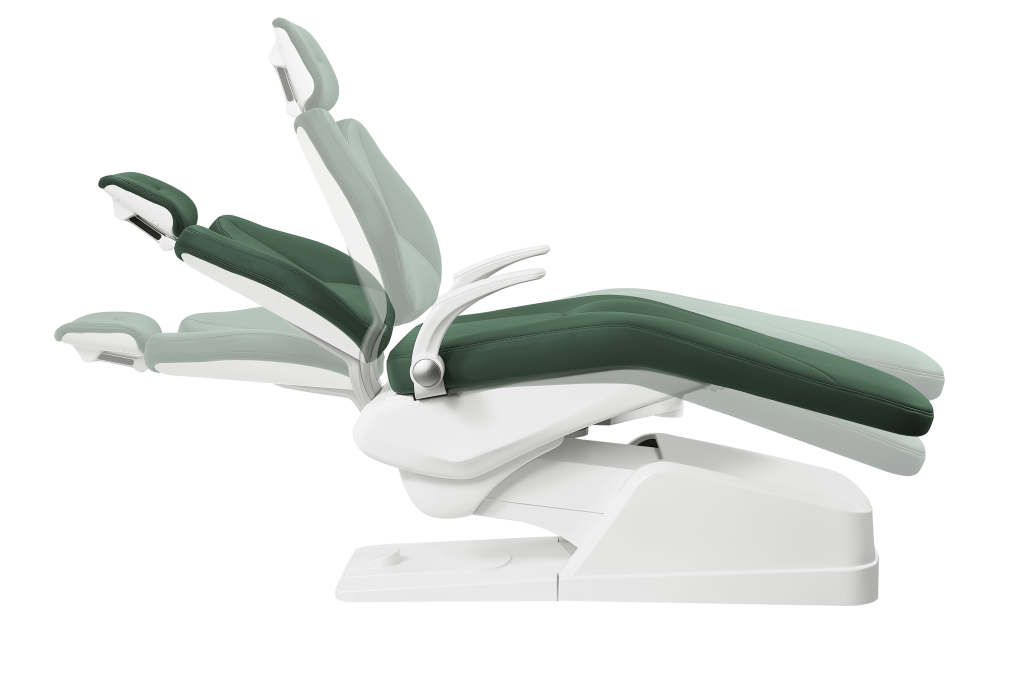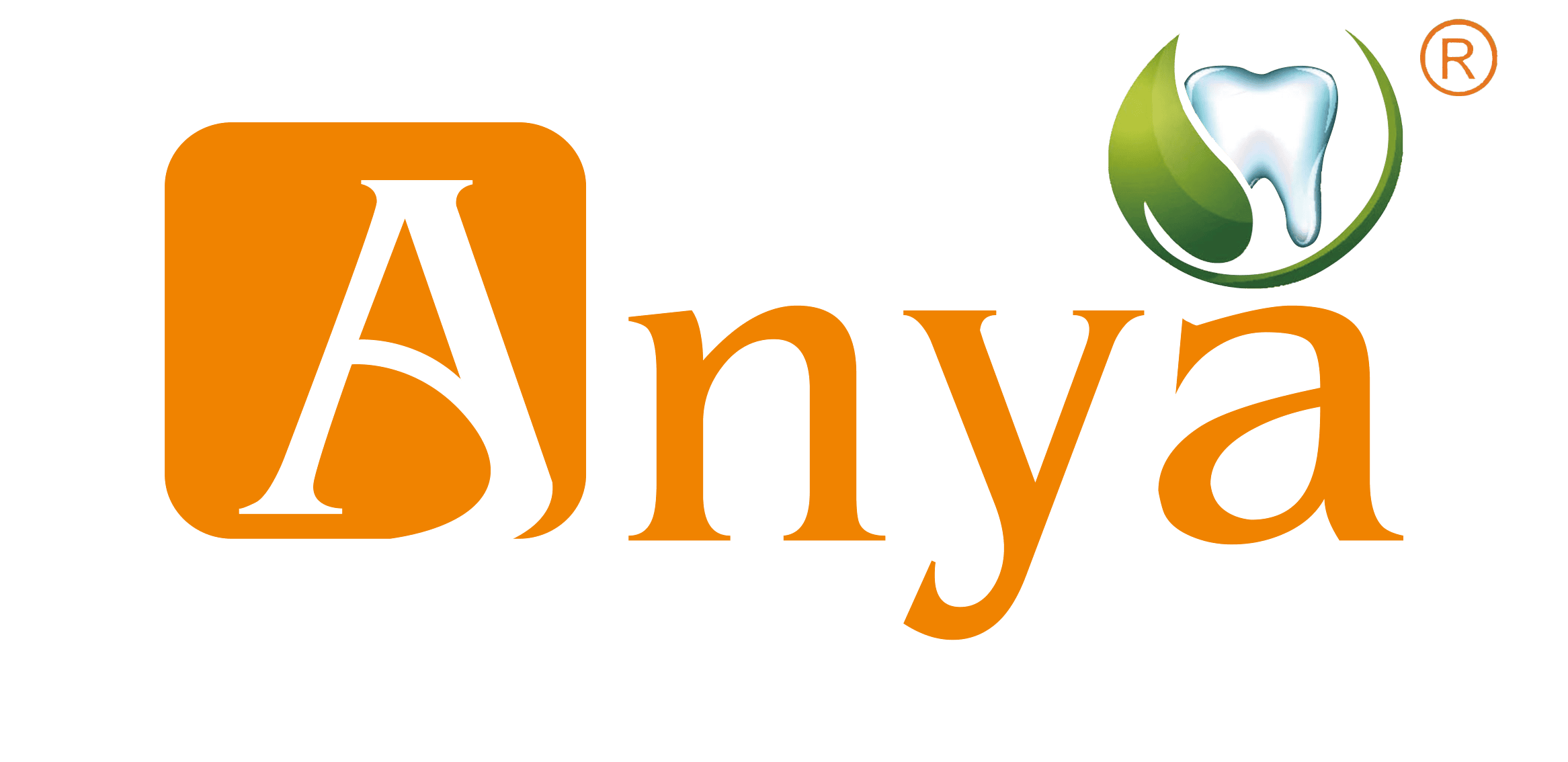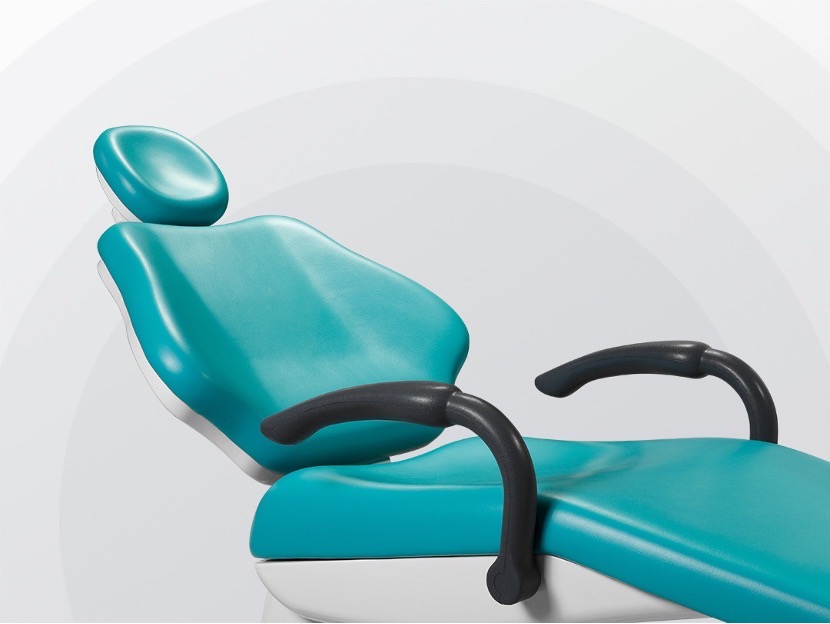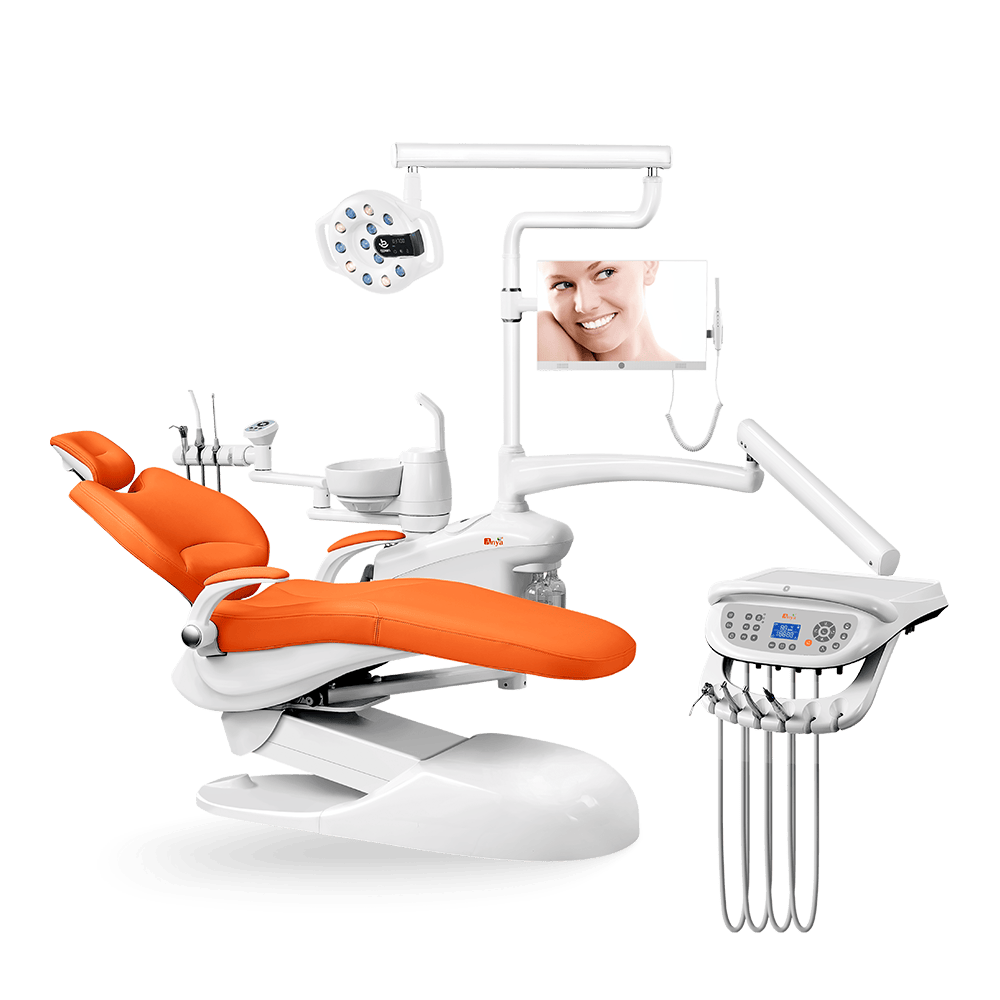The integration of memory position technology in modern dental chairs represents one of the most significant advancements in dental practice efficiency and ergonomics. As we move through 2025, these intelligent positioning systems have evolved from luxury features to essential components that actively contribute to clinical outcomes, practitioner health, and practice profitability. According to the American Dental Association’s 2025 Equipment Survey, practices utilizing advanced memory position technology report up to 42% reduction in setup times between patients and significant decreases in practitioner fatigue.
This comprehensive guide examines the latest innovations, implementation strategies, and return on investment calculations for memory position technology in contemporary dental settings.
Evolution of Memory Position Systems in Dental Chairs
Memory position technology has undergone remarkable evolution since its introduction. What began as simple presets has transformed into sophisticated AI-enhanced systems that learn and adapt to both patient needs and practitioner preferences.

Early developments (2010-2015) featured basic programmable positions with limited customization. These systems stored 2-3 standard positions (treatment, rinse, entry/exit) using mechanical position encoders with modest precision.
Mid-generation systems (2016-2020) introduced multi-user capabilities and expanded position memory. These chairs could store 5-6 positions with improved accuracy through digital sensor arrays and enhanced motor control systems.
Current generation (2021-2025) memory position technology incorporates AI-driven personalization, body metric analysis, and integration with practice management systems. Modern systems from manufacturers like Anya Medical can store up to 9 programmable positions with sub-millimeter precision, enabling instantaneous transitions between complex treatment scenarios.
The progression of this technology reflects broader innovations in dental chair design that prioritize both clinical efficiency and practitioner wellbeing.
How Memory Position Technology Works
Memory position technology relies on sophisticated sensor arrays and precision control systems to store and recall exact spatial coordinates for all adjustable chair components. Unlike basic movement controls, advanced memory systems track multiple parameters simultaneously:
- Chair height position
- Backrest angle and lumbar support configuration
- Headrest position and tilt angle
- Armrest positioning
- Footrest extension and angle
These systems use high-resolution angle sensors that maintain position data with exceptional accuracy (±0.03° in premium systems), eliminating the cumulative positioning errors common in older chair designs.
When a position is saved, the system’s processor creates a comprehensive spatial map rather than simply recording basic up/down coordinates. This comprehensive approach enables the chair to maintain precise spatial relationships between components even after thousands of positioning cycles.
Core Technical Components
The technical foundation of memory position systems includes:
- Digital microprocessors – 20Mb/s control systems enabling instant position recall
- Precision electrical actuators – Premium components like Taiwan Timotion motors used in Anya Medical’s AY-A3600 chairs
- Distributed sensor networks – Multiple measurement points ensuring accurate synchronization of all chair components
- User interface systems – Intuitive controls through touchpads, wireless remotes, or foot controls
Many 2025 dental chairs now incorporate predictive maintenance capabilities that analyze usage patterns through machine learning algorithms to identify potential mechanical issues before they cause equipment failure, significantly reducing unexpected downtime.
Clinical Benefits of Memory Position Technology
Enhanced Workflow Efficiency
Memory position technology delivers quantifiable workflow improvements that directly impact practice profitability:
- Reduced setup time – Practices report saving 4-6 minutes per procedure with one-touch positioning
- Streamlined practitioner transitions – Multi-user memory systems allow different operators to instantly recall their preferred ergonomic settings
- Improved treatment standardization – Consistent positioning across different operators ensures uniform treatment quality
Research published in the Journal of Dental Economics (2025) found that practices implementing advanced memory position technology accommodated an average of 2.8 additional patient appointments daily-a capacity enhancement that translates directly to revenue growth without increasing chair count or staffing.
Ergonomic Benefits for Dental Professionals
The ergonomic advantages of memory position technology extend beyond convenience to significantly impact practitioner health and career longevity:
- Optimal working postures – Precise positioning maintains ideal ergonomic relationships between practitioner, patient, and equipment
- Reduced musculoskeletal stress – Studies show proper positioning reduces neck strain by up to 41% and back pain by significant margins
- Consistency across procedures – Practitioners maintain optimal ergonomic positioning throughout different treatment types
According to the 2025 Dental Practitioner Health Survey, dentists using chairs with advanced memory position technology reported 23% faster physical recovery time during consecutive 10-hour shifts compared to those using standard equipment.
Applications in Specialized Dentistry
Memory position technology delivers exceptional value in specialized treatments, particularly implantology and surgical procedures:
- Enhanced precision for implant procedures – Predetermined positions ensure stability during critical phases of implant placement
- Improved surgical access – Custom positions maximize visibility and instrument access during complex procedures
- Reduced physical strain during lengthy treatments – Alternating between saved positions minimizes static loading on practitioners’ musculoskeletal systems
The International Journal of Implant Dentistry reports that practices utilizing advanced memory position technology demonstrate 37% greater precision in implant placement and significantly reduced procedure times compared to practices using standard equipment.
Comparing Memory Position Systems Across Chair Models
Modern dental chairs offer various memory position capabilities across different price points. This comparison helps practitioners identify the optimal solution for their specific needs:
| Feature | Entry-Level (AY-A1000) | Mid-Range (AY-A3600) | Premium (AY-A8000) |
|---|---|---|---|
| Number of memory positions | 3-5 positions | 9 positions | 18 positions (6 for 3 users) |
| Position accuracy | ±0.5° | ±0.1° | ±0.03° |
| User profiles | Single user | 2 users | 3+ users with individual preferences |
| Recall speed | 5-7 seconds | 3-4 seconds | <2 seconds |
| Integration capabilities | Basic | Practice management software | Full digital workflow integration |
| Price range (2025) | $3,000-$7,000 | $7,000-$15,000 | $15,000-$30,000 |
| Learn more | AY-A1000 Series | AY-A3600 | AY-A8000 |
Entry-level systems offer fundamental memory position capabilities with simplified controls and limited customization. These chairs typically store 3-5 standard positions (treatment, rinse, entry/exit) and are ideal for solo practitioners with straightforward treatment profiles.
Mid-range options like the Anya Medical AY-A3600 represent the optimal balance between advanced functionality and investment value. With 9 programmable positions and multi-user capability, these chairs accommodate complex treatment workflows while remaining accessible for growing practices.
Premium dental chairs incorporate sophisticated memory position technology with AI-enhanced customization. Systems like the Anya Medical AY-A8000 store up to 18 intelligent memory positions (6 positions for 3 different practitioners) and seamlessly integrate with practice management systems for comprehensive treatment coordination.
ROI Analysis for Dental Practices
Investing in advanced memory position technology delivers measurable returns through multiple value channels:
Time Savings Calculation
Memory position technology generates quantifiable time savings that translate directly to practice revenue:
| Activity | Without Memory Positions | With Memory Positions | Time Saved per Patient |
|---|---|---|---|
| Initial positioning | 2-3 minutes | 10-15 seconds | ~2 minutes |
| Mid-procedure adjustments | 3-4 minutes | 30-60 seconds | ~3 minutes |
| Position recording | Manual notes | Automated | ~1 minute |
| Total time saved | ~6 minutes |
For a practice seeing 20 patients daily, this equates to approximately 120 minutes saved-enabling two additional appointments daily or reduced practitioner fatigue and improved work quality.
Equipment Longevity and Maintenance Benefits
Modern memory position systems offer significant maintenance advantages:
- Extended component lifespan – Premium components like Taiwan Timotion motors maintain performance for 10,000+ cycles
- Predictive maintenance capabilities – Advanced systems detect potential issues before failure occurs
- Reduced wear through optimized movements – Precision control systems minimize mechanical stress
According to 2025 Dental Equipment Reliability Reports, practices using advanced memory position systems report 48% fewer emergency repairs and 59% reduced equipment-related downtime-translating to approximately $28,500 annual savings for mid-sized practices.
Patient Experience Enhancement
Memory position technology significantly improves patient comfort and perception of practice sophistication:
- Consistent comfort across visits – Stored positions ensure patients experience the same comfortable configuration
- Reduced anxiety through smooth transitions – Gentle, precise movements create a more relaxing experience
- Perception of advanced technology – Sophisticated positioning reinforces practice brand as cutting-edge
Patient satisfaction surveys indicate that practices utilizing advanced memory position technology experience 37% higher patient loyalty rates and 42% increased referrals compared to practices using standard equipment.
Implementation Guide for Memory Position Systems
Programming Best Practices
To maximize the benefits of memory position technology:
- Create standardized position protocols for common procedures
- Customize positions for individual practitioner dimensions based on height, arm length, and preferred working distance
- Implement progressive positioning workflows with sequential positions that follow natural treatment progression
- Label positions clearly using intuitive naming conventions that reflect their clinical purpose
- Document position rationales to maintain consistency across staff and support training
For specialized procedures like implantology, program complementary positions that accommodate surgical kit placement and assistant access while maintaining optimal visualization.
Training Staff Effectively
Proper training ensures maximum utilization of memory position capabilities:
- Conduct formal training sessions when implementing new equipment
- Create quick-reference guides documenting standard positions for common procedures
- Incorporate positioning into procedure protocols to standardize usage across practitioners
- Schedule periodic refresher training to maintain consistency and introduce advanced features
According to the Journal of Dental Practice Management, practices that implement comprehensive training protocols realize 72% greater efficiency gains from memory position technology compared to those relying on informal learning approaches.
Maintenance Protocols
To ensure optimal performance and longevity:
- Schedule regular calibration checks (quarterly recommended)
- Clean sensor surfaces according to manufacturer specifications
- Update control software when available
- Document unusual behavior for early intervention
Anya Medical’s maintenance portal provides comprehensive guidelines for preserving optimal chair performance throughout its operational lifespan, including detailed maintenance schedules and troubleshooting resources.
Future Innovations in Dental Chair Memory Position Technology
The evolution of memory position technology continues with several emerging innovations poised to transform the dental practice experience by 2026-2027:
AI and Machine Learning Integration
Next-generation memory position systems will incorporate artificial intelligence that learns from usage patterns to anticipate positioning needs:
- Predictive positioning – AI algorithms will analyze procedure types and practitioner preferences to suggest optimal positions
- Adaptive ergonomic guidance – Real-time feedback will suggest position adjustments to minimize practitioner strain
- Treatment-specific optimization – Positions will automatically adjust based on procedure duration and complexity
These AI enhancements will transform memory positions from static presets to dynamic, responsive systems that actively support optimal treatment delivery.
Integration with Digital Dentistry Workflows
Emerging developments in memory position technology include:
- CBCT/scanner integration – Automatic positioning based on imaging requirements
- Treatment planning synchronization – Chair positions that automatically align with digital treatment plans
- Procedure recording and playback – Systems that document successful positioning for complex procedures
These advancements will create bidirectional data flow between imaging systems and chair mechanics, further enhancing precision during complex procedures and contributing to standardized treatment protocols.
Enhanced Haptic Feedback Systems
Future dental chairs will incorporate advanced haptic systems that provide tactile feedback to practitioners:
- Subtle vibration cues indicating optimal positioning has been achieved
- Pressure distribution monitoring with real-time feedback
- Ergonomic alert systems that notify practitioners of potentially harmful positions
These innovations will further reduce practitioner fatigue and enhance treatment precision by providing immediate physical feedback about positioning quality.
Conclusion: Selecting the Right Memory Position System
Memory position technology has evolved from convenient feature to clinical necessity. When selecting the optimal system for your practice, consider these factors:
- Practice size and configuration – Solo practitioners benefit from different features than group practices
- Specialization focus – Surgical and implant-focused practices require enhanced stability and precision
- Growth projections – Invest in systems that can expand with your practice needs
- Integration requirements – Ensure compatibility with existing and planned technologies
The right memory position system depends on your unique practice configuration, specialization, and growth projections:
- Solo practitioners benefit most from mid-range systems like the AY-A3600 with 9 programmable positions
- Multi-doctor practices should consider premium options like the AY-A8000 with 18 intelligent memory positions
- Specialty practices focusing on implantology gain exceptional value from sophisticated systems with enhanced stability features
By investing in appropriate memory position technology, practices achieve measurable gains in efficiency, practitioner health, and treatment precision-delivering substantial returns that extend far beyond initial procurement costs.
For personalized guidance on selecting the optimal memory position system for your specific practice needs, visit Anya Medical’s configuration portal to receive customized recommendations based on your practice profile and clinical focus.




